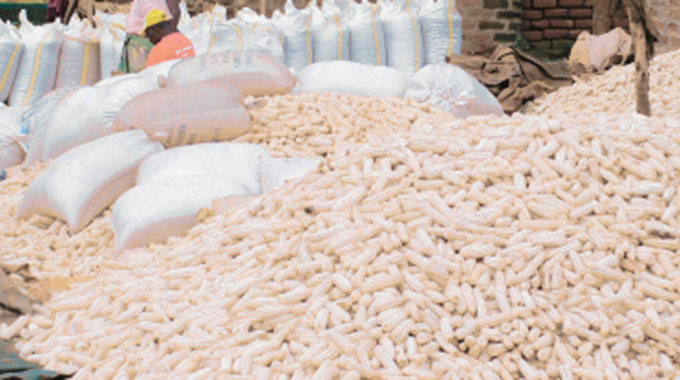Mash Central registers surplus in cereals production

An assessment report shows that Mashonaland Central province produced 170 356 tonnes of cereals against a requirement of 151 684 tonnes
The Herald
Elita Chikwati Senior Reporter
Mashonaland Central is expected to have a surplus of 18 675 tonnes of cereals from the 2018/19 summer cropping season.
The Ministry of Lands, Agriculture, Water, Climate and Rural Resettlement second round crop and livestock assessment report shows that the province produced 170 356 tonnes of cereals against a requirement of 151 684 tonnes.
The province has a population 1 264 031.
According to the report, farmers are expected to harvest 159 184 tonnes of maize after planting 208 699 hectares.
This is a decline of 56 percent from the 359 877 tonnes produced during the previous season.
The report states that farmers in Mashonaland Central are expected to harvest 10 242 tonnes of sorghum, 780 tonnes of pearl millet, 150 tonnes finger millet, bringing the total amount of cereals expected to 170 356 tonnes.
The province is also expected to harvest 10 481 tonnes of groundnuts, down from 13 041 tonnes last season, 12 653 tonnes of sweet potatoes and 560 tonnes of roundnuts.
The province registered an increase of 290 percent in cowpea production from 903 tonnes last year to 3 523 tonnes during the 2018/19 season.
Farmers in Mashonaland Central are also expected to harvest 59 787 tonnes of tobacco, a decline from the 74 219 tonnes produced last season, while 17 361 tonnes of cotton are expected this year. This is a decline from the 19 383 tonnes produced last season.
Soyabean production is also expected to decline from 28 491 tonnes produced last season to 21 594 tonnes this year.
The 2018/19 second round crop and livestock assessment report notes that 2018-2019 season was characterised by late rains across the country.
“The false starts in the southern and south-eastern parts of the country affected the crop establishment,” reads the report in part. “Long dry spells in January and February negatively affected the planted crop. Cyclone Idai, which hit the country in mid-February, caused severe damage to crops and agriculture infrastructure in Manicaland and Masvingo provinces.
“However, it improved crop condition in Mashonaland East and Central.”
The condition of all livestock classes ranged from fair to good in all districts.
Water for livestock was available in most districts as a result of Cyclone Idai-induced rains which improved the water situation in most water bodies in Mashonaland provinces, Manicaland and parts of Masvingo and Midlands.
“Dipping is generally erratic due to critical shortage of chemicals with priority in allocation of the chemicals being given to areas that were severely affected by the outbreak of Theileriosis popularly known as January Disease,” states the report.
